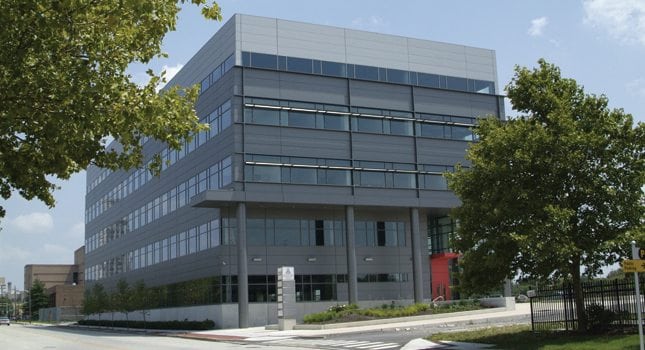
NJEDA Assists High-Tech Firms
State agency strives to maintain and grow New Jersey as a center for innovation.
By Anthony Birritteri, Editor-in-Chief On Jun 9, 2014Among the many aspects the New Jersey Economic Development Authority (EDA) offers in helping businesses in New Jersey succeed, its assistance to high-tech companies is as cutting edge as the businesses it helps.
Through various tax incentives, loan programs, access to venture capital and incubator spaces, the Authority should be on every entrepreneur’s and small business owner’s radar screen. And, if a high-tech company doesn’t know about the EDA, the EDA will probably find out about the company.
“We are out in the marketplace all the time, talking to entrepreneurs and playing matchmaker with our venture capital partners,” says Kathleen Coviello, director of the Technology & Life Sciences Division at the EDA.
Among its new initiatives, the Authority is helping high-tech entrepreneurs meet with venture capitalists and angel investors on a quarterly basis, via one-on-one meetings held at the EDA’s Commercialization Center for Innovative Technologies located on Route 1 in North Brunswick. The goal of the New Jersey Founders & Funders event is for entrepreneurs to receive funding, or at least positive feedback, from investors. The first meeting will be held on June 10. If it is successful, future meetings may be held monthly.
Entrepreneurs will be able to sign up online in advance of each event at www.NJEDA.com and the Authority will provide them with profiles of the participating investors. “The entrepreneur will let us know which investors they would like to meet. In turn, we provide investors with an executive summary on the company/entrepreneur,” Coviello explains.
According to EDA Chief Executive Officer Michele Brown, “This is like our own ‘Shark Tank.’ We heard from so many entrepreneurs that they want one-on-one access to capital providers in the state. Through this effort, we are helping to facilitate that.”
Brown is also pleased that the EDA recently approved its first high-tech businesses under the state’s revised Grow NJ program. In order to qualify for assistance, a business must create or retain jobs and make a capital investment in certain qualified incentive areas (see www.NJEDA.com for details). High-tech companies and manufacturers receive an added benefit under Grow NJ because those companies only have to create 10 new jobs or retain 25, lower than the 35 new jobs and 50 retained jobs for other businesses. Brown adds, “Those employment numbers are reduced by a quarter if a tech company wants to build in the state’s southern eight counties or a Garden State Growth Zone (four urban cities including Camden, Trenton, Paterson and Passaic).”
Companies that recently received Grow NJ awards include: ENER-G Rudox Inc., which will establish an advanced manufacturing facility for cogeneration and energy-efficiency systems, as well as a state-of-the-art network operations center in East Rutherford instead of Wisconsin; and SodaStream USA, Inc., which will expand its presence in Pennsauken, rather than a competing location in Utah. With its lease expiring at year end, a Grow NJ tax credit was awarded to Sys-tech Solutions to encourage the technology company to relocate and expand in Plainsboro over Pennsylvania.
Brown notes that since the EDA began accepting applications under the enhanced Grow NJ program last November, 23 projects have been awarded tax credits tied to the creation of nearly 2,900 new jobs and the retention of more than 2,580 “at-risk” jobs. Of the projects approved to date, nine awards included a bonus increase for being in the targeted industry of manufacturing and six received a bonus for being in the targeted industry of technology.
Another successful program, which was introduced last year, is the Angel Investor Tax Credit Program. It provides investors with tax credits of up to 10 percent of a qualified investment in an emerging technology business with a physical presence in the state that conducts research, manufacturing or technology commercialization.
“Thirty investments to date have been approved under this program, representing $14.7 million of capital into New Jersey technology and life sciences companies,” Brown says.
Businesses that benefitted in the first quarter of 2014 under the program include: Bat Blue Networks, a leading provider of Cloud-based Virtual Perimeter Services based in Clifton; and Totowa-based VectraCor, a company working to develop and commercialize a portfolio of products to simplify and provide a faster method for diagnosis, prevention and treatment of cardiac and neurological diseases.
Of all EDA tax incentives for high-tech startups, Coviello says the Technology Business Tax Certificate Transfer Program still remains “the best for these companies that need cash.” Under the program, unprofitable technology or biotechnology companies with fewer than 225 US employees would be able to sell their net operating losses (NOLs) and research and development tax credits to unrelated profitable corporations. NOLs and R&D tax credits could be sold for at least 80 percent of their value, up to a maximum lifetime benefit of $15 million per business.
This year, the EDA is making things easier for companies to participate in the program by offering an online application process rather than have individuals head to EDA offices in Trenton.
According to Brown, “For so many companies, this program makes the difference of whether they can make it through for another year without having to dilute the value of their company or make it through because they are not ready for other kinds of investments.”
On another front, the EDA offers high-tech startups incubation space at three technology centers throughout the state that provide customizable laboratory and production facilities at below-market rents.
The Technology Centre of New Jersey, located in North Brunswick, consists of 325,000 square feet of lab, production and office space. The facility is also home to the 46,000-square-foot Commercialization Center for Innovative Technologies (CCIT), which is dedicated to assisting life sciences and biotechnology companies with technology transfer initiatives.
Last year, the CCIT added 10 new clients, and three more were added so far this year. “Things are going like gangbusters at the facility,” Coviello comments. “Talk about innovation and new technology being developed in the state; this is a prime example.”
This year’s new tenants include: Novanex, a medical device company that develops and commercializes innovative devices and technology to monitor or detect disease conditions or status; VClinBio, a scientific research organization that provides services in translational, clinical and preclinical research for advancing drug discovery, personalized therapeutics, biomarkers research and clinical diagnostics validation; and Crystal Pharmatech, a technology-driven contract research organization that focuses on materials science and engineering for drug development. Additionally, specialty pharmaceutical company Ascendia Pharmaceuticals executed a lease for an additional 1,000 square feet of space at the center.
“Most of our EDA tech team is housed at the CCIT, so on a daily basis, they provide guidance and professional assistance to our small companies,” Brown says.
At the 100,000-square-foot, five-story Waterfront Technology Center at Camden, which is designed for both established businesses and startups, Brown explains that very little open space is left. “We are happy that Rutgers University just finalized a 64-month lease at our center. They will have 12 faculty and grad students there using pre-built lab space for special projects and biology related to research,” she says.
The EDA also oversees a variety of Edison Innovation Funds that seek to develop, sustain and grow technology and life sciences businesses. The most popular are: the Edison Innovation VC Growth Fund and the Edison Innovation Green Growth Fund.
Brown is bullish about the state’s high-tech sectors, commenting, “We are seeing more and more high-tech companies moving into New Jersey. Over the course of the last 18 months, we have also seen many pharmaceutical companies come into the state. She names Valeant Pharmaceuticals International as an example. The company bought Bausch + Lomb for more than $1 billion, and when it came time for it to make a decision on whether to grow in New Jersey or move out of state, it accepted a Grow NJ incentive, keeping 274 jobs here and planning to add 550 new full-time jobs. The company recently signed a long-term lease for 310,000 square feet of space, occupying the entire Somerset Corporate Center IV in Bridgewater.
Overall, Brown says the state continues to be an ideal place to locate a high-tech business because New Jersey is “Highly Educated and Perfectly Located,” referring to the slogan for Choose NJ, an organization dedicated to attracting companies to the Garden State. “We are in between New York and Philadelphia, we have among the highest average per capita incomes in the nation, and have a huge concentration of scientists and engineers (who are also starting to develop individual concentrations of tech companies here).”
Coviello says New Jersey is uniquely positioned in two ways: “One is the talent pool that we have; and two is the fact that we have so many enterprise businesses that have been here for a long time … they are the acquirers and users of the new technology. So, to have the technology developers close to their customers is what makes New Jersey a unique proposition for entrepreneurs.”
Related Articles:





